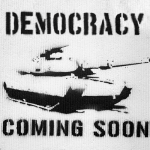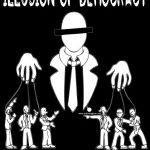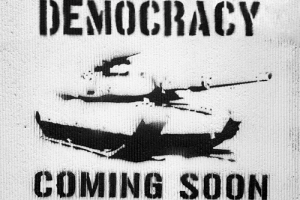It would be, if it weren’t for the people.
Economics aspires to be a science. But in this it does not succeed. Neither does finance. This despite the fact that there is an annual, optimistically named Nobel Prize in “Economic Sciences.”
Financial crises keep happening—the list is long. Could they be avoided if economics and finance were science? To paraphrase financial observer James Grant: science is progressive, but finance is cyclical.
But why should this be? Do we not learn from experience? Does economic knowledge not increase? And how about having computers, vast amounts of data and information, and new mathematical models to guide lending and investing decisions?
The former CEO of Household International, first bought by HSBC and then brought low by the subprime mortgage collapse, is said to have bragged that his operation had 150 PhDs to model credit risk. The idea that improved knowledge will keep us out of trouble is not new. “[Benjamin] Disraeli had asserted that the boom of 1825 would not turn to bust because the period was distinguished from previous ages by superior commercial knowledge,” wrote Edward Chancellor in Devil Take the Hindmost: A History of Financial Speculation, but there was a big bust anyway.
Our 21st-century housing bubble, now deflated, was inflated despite—indeed partially because of—amazing computer power, reams of data, and sophisticated models operated by exceptionally bright analysts informed by Nobel Prize-winning financial theories. These computerized models created a sense of security, just as did the “superior commercial knowledge” of 1825.
As the great investment guru, Benjamin Graham, wrote in his classic, The Intelligent Investor:
The concept of future prospects . . . invites the application of formulas out of higher mathematics to establish the present value of the favored issues. But the combination of precise formulas with highly imprecise assumptions can be used to establish, or rather to justify, practically any value one wishes . . . Mathematics is ordinarily considered as producing precise and dependable results: but in the stock market [or in the subprime mortgage-backed securities market] the more elaborate and abstruse the mathematics, the more uncertain and speculative are the conclusions.
Models and Recursiveness
Consider Moore’s Law of Finance, as I call it (after my bond-market friend Mike Moore): “The model works until it doesn’t.” Perversely, the more everyone believes the model, and the more everyone uses the same model, the more likely it is to induce changes in the market that make it cease to work.
In this cycle, the market and the regulators became enamored of the statistical treatments of risk, whereas the most important issue is always the human sources of risk. These human sources include short memories and the inclination to convince ourselves that we are experiencing “innovation” and “creativity,” when all that is happening is a lowering of credit standards by new names.
For example, with the spread of “stated income” loans during the housing bubble, the disastrous previous experiences with “no doc” and “low doc” loans seem to have been forgotten. Such loans are a notable temptation, or even invitation, to a little lying in order to facilitate the dream of buying a house whose price will always keep rising.
Human elements of risk also include optimism, gullibility, short-term focus, genuine belief in momentum or the extrapolation of so-far successful speculation, group psychology or the lemming effect, and, inevitably, fraud.
We should not be surprised that as optimism increases, so does credulity. The father of central banking theory, Walter Bagehot, observed: “The good times of too high price almost always engender much fraud. All people are most credulous when they are most happy . . . Almost everything will be believed for a little while.”
The subprime boom and bust cannot be discussed without considering securitization of subprime pools through tranched, senior-subordinated structures based on mathematical models. The lower tranches of subprime mortgage-backed securities were extremely highly leveraged to credit risk. They were often gathered into collateralized debt obligations and further tranched, thus creating securities hyper-leveraged to credit risk.
Some of these tranches went to buyers who were greatly surprised by the vast losses. This must put us in mind of Stanton’s Law (name after Tom Stanton, author of A State of Risk): “Risk migrates to the hands least competent to manage it.” This is because the more competent can manage their risk by passing it to the less competent.
But there is another possibility: “When genius fails,” (the title of a book about the failure of long-term capital management) the extremely clever may believe too much in their own models and cleverness, then find out they had much more risk and much less science than they thought—and so the fall of famous Wall Street firms. As Bagehot also said, “Every great crisis reveals the excessive speculations of many houses which no one before suspected.”
Belief—For Example, Belief in House Prices
In the bubble, according to the Case-Shiller national house price index, U.S. average house prices increased by an enormous 90 percent from early 2000 to the peak in mid-2006. Then they fell more than 30 percent from the peak, back to about the level of 2003.
We are now almost four years into the housing bubble’s deflation. National average house prices have gotten about back to their longer-term trend line. As gravity pulls a thrown object back down, house prices are coming back to their trend.
Indeed, how could anybody believe that the prices of houses do not go both up and down? For that matter, how could anybody believe that the price of anything could not go down as well as up? That is the nature of a price.
Risk and Uncertainty
To forecast and, moreover, control the financial future correctly is literally impossible. This is because of the exceptionally complex and very rapid recursiveness of financial markets and the resultant Uncertainty. This “Uncertainty,” with a capital “U,” means, remembering the classic definition of economist Frank Knight, that you not only do not know the odds of events, but you cannot know the odds.
It is in vain to think that an official “systemic risk regulator” like the “Financial Stability Oversight Council” anointed by the Dodd-Frank Act or anybody else can or could foresee all future financial problems or prevent all future bubbles and busts. Everybody, no matter how intelligent and diligent, no matter how many economists and computers are employed, makes mistakes when it comes to predicting (let alone controlling!) the future.
Because uncertainty is fundamental, sometimes disastrous mistakes will continue to be made by entrepreneurs, bankers, borrowers, central bankers, government agencies, politicians, and by the interaction of all of the above.
Knight wrote: “If the law of change is known, no [economic] profits can arise.” Likewise: “If the law of change is known, no financial crises can arise.” But in economics and finance, the law of change is never known. So change reflecting uncertainty goes on, bringing booms and busts periodically, and Adam Smith’s “progress of opulence” on the trend.
Economics and finance might be science, if it weren’t for people.
Alex J. Pollock
source: american.com












Adauga comentariu